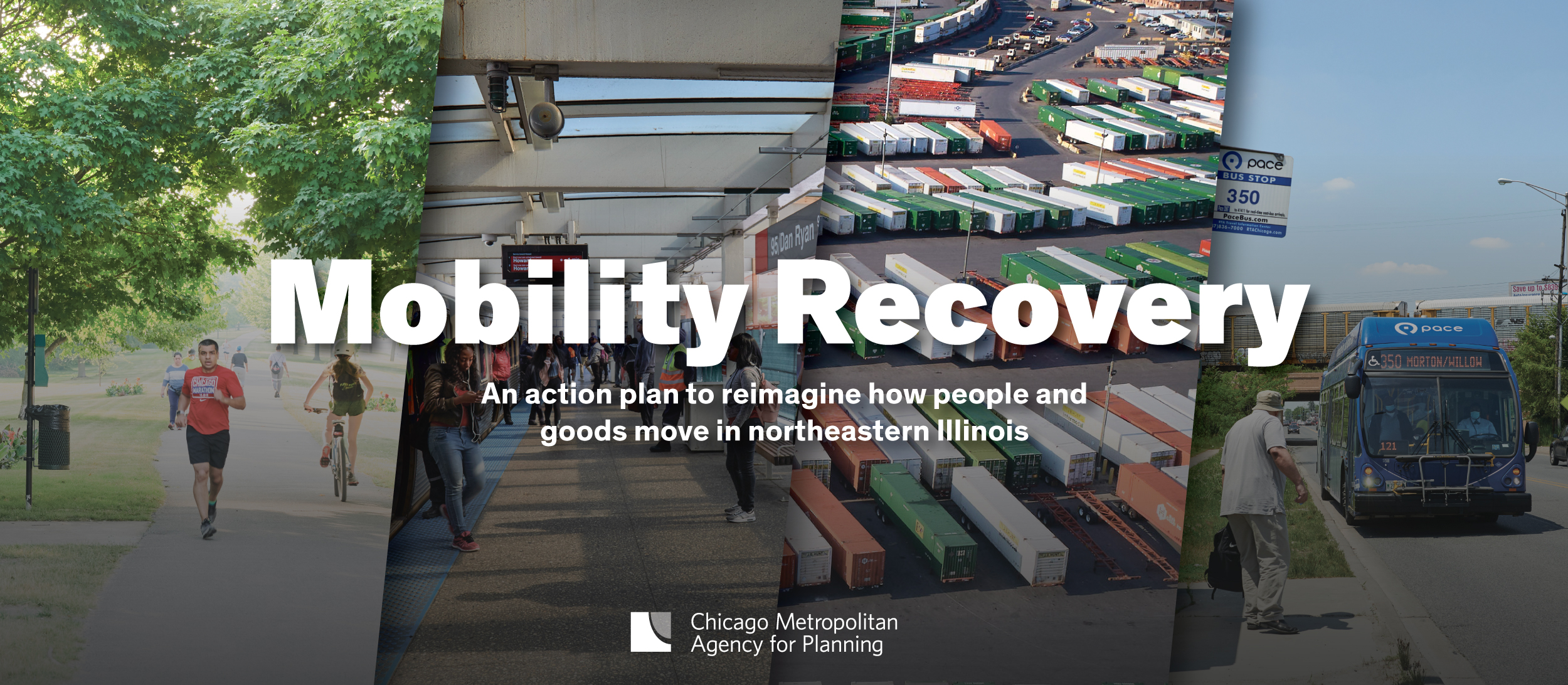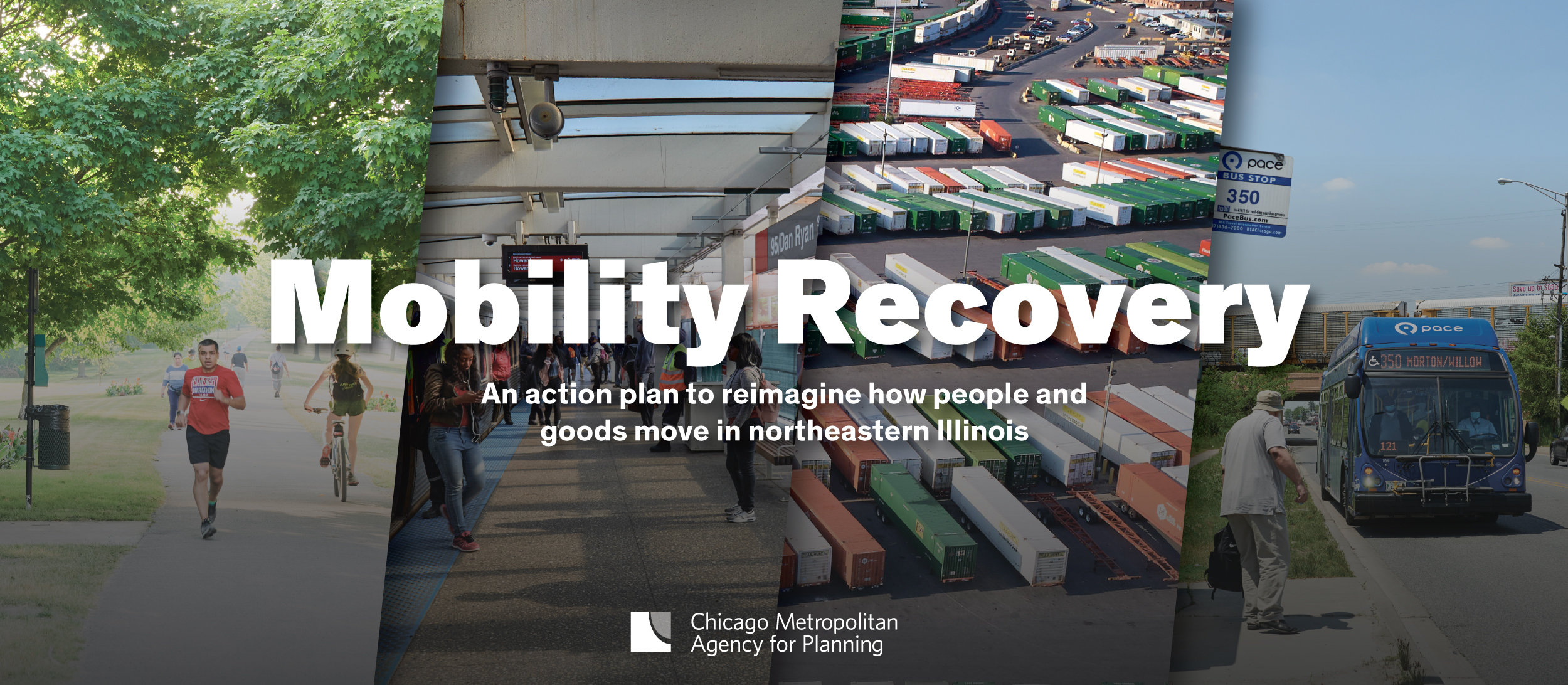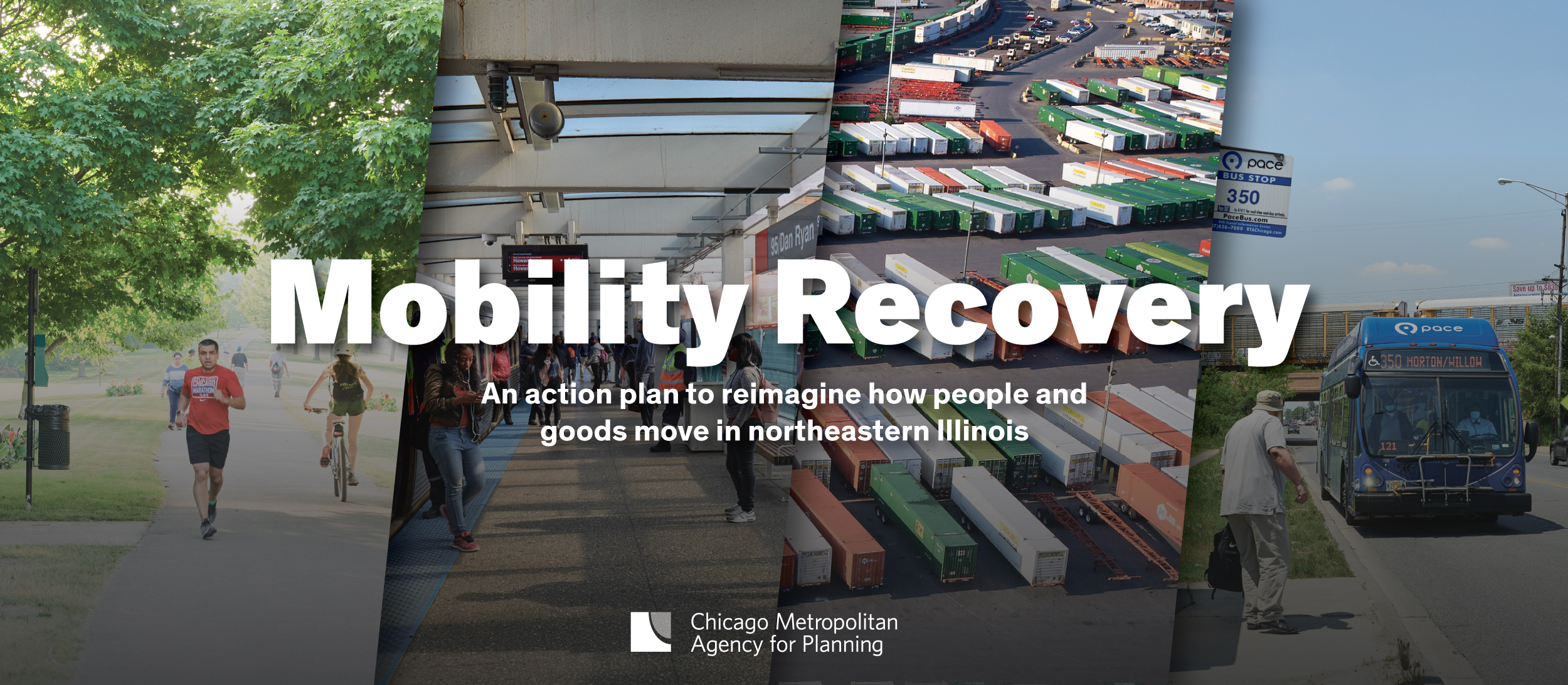
The COVID-19 pandemic created enormous challenges for northeastern Illinois’ transportation system and intensified many longstanding disparities. But we can use this moment to reimagine how our transportation network can better serve all residents.
To prepare the region for a post-pandemic recovery, the Chicago Metropolitan Agency for Planning (CMAP) worked with our partners to develop a visionary mobility strategy that can support an equitable recovery, sustain the transit network, and ease a rebound in congestion.
The two-year effort — supported through extensive research, analysis, and outreach — tracked trends to better understand how our region’s transportation needs evolved during the pandemic and identified numerous strategies to address these challenges.

